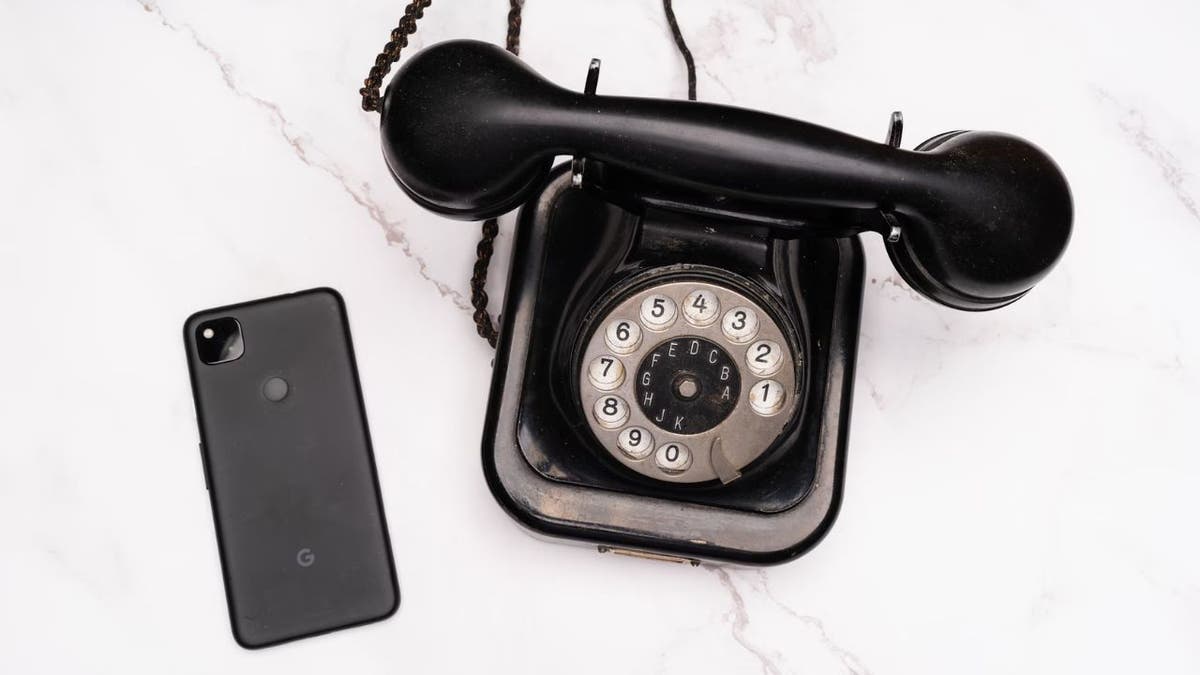Technology
The world’s biggest battery maker says Elon Musk’s 4680 cell ‘is going to fail’
/cdn.vox-cdn.com/uploads/chorus_asset/file/25734293/GXdMxmZXcAEQ5K5.jpeg)
Robin Zeng, the founder of the world’s largest EV battery company, says Tesla CEO Elon Musk’s big bet on 4680 cylindrical cell technology “is going to fail and never be successful.” Zeng, the chairman of China’s Contemporary Amperex Technology (CATL), tells Reuters that when Musk visited China in April, “We had a very big debate, and I showed him. He was silent. He doesn’t know how to make a battery.”
Tesla’s “tabless” 4680 cells, which are used in some of its cars, including the Cybertruck, are supposed to have “five times” more energy capacity, and the company announced in September it had produced 100 million of them. A recent report by The Information said Musk had given the team working on the batteries an end of the year deadline to deal with costs and other problems.
CATL batteries, meanwhile, go inside everything from Tesla vehicles in China to Ford EVs in North America like the Mustang Mach-E and F-150 Lightning. The company specializes in lithium iron phosphate batteries (LFP), which generally don’t get as much range as various cylindrical cell units used in many Tesla vehicles.
While Zeng wasn’t impressed with Musk’s battery knowledge, he thought he was good with chips, software, hardware, and “mechanical things.”
Zeng also commented that Musk’s problem is “overpromising” timelines, which he often does habitually, especially regarding Full Self-Driving technology. “Maybe something needs five years. But he says two years. I definitely asked him why. He told me he wanted to push people.”

Technology
Stranger Things 5’s first trailer promises an epic showdown

It’s been a long time coming, but we finally have a real look at the end of Stranger Things. Netflix just released the first teaser trailer for the show’s fifth season, which will also be its last when it starts streaming later this year. As was alluded to in the finale of season 4, the new trailer — which, despite being called a teaser, clocks in at nearly three minutes long — is focused on the major showdown with Vecna that will presumably end the string of supernatural bad luck in Hawkins, Indiana for good.
Here’s the official setup for the finale, according to Netflix:
The fall of 1987. Hawkins is scarred by the opening of the Rifts, and our heroes are united by a single goal: find and kill Vecna. But he has vanished — his whereabouts and plans unknown. Complicating their mission, the government has placed the town under military quarantine and intensified its hunt for Eleven, forcing her back into hiding. As the anniversary of Will’s disappearance approaches, so does a heavy, familiar dread. The final battle is looming — and with it, a darkness more powerful and more deadly than anything they’ve faced before. To end this nightmare, they’ll need everyone — the full party — standing together, one last time.
Technology
Landline identity theft leads to major bank fraud

NEWYou can now listen to Fox News articles!
Landline identity theft is an emerging threat that gives scammers backdoor access to your accounts.
An outdated phone number, especially a forgotten landline, can help them bypass security and drain your savings.
Here’s how it happens and how to stop it.
Sign up for my FREE CyberGuy Report
Get my best tech tips, urgent security alerts, and exclusive deals delivered straight to your inbox. Plus, you’ll get instant access to my Ultimate Scam Survival Guide – free when you join my CYBERGUY.COM/NEWSLETTER.
IS YOUR PHONE HACKED? HOW TO TELL AND WHAT TO DO
A man on a phone call using a landline telephone (Kurt “CyberGuy” Knutsson)
How forgotten landline identity theft drained a bank account
Richard from Reno, Nevada, shared a troubling story. His friend lost money to scammers because their old landline number was still linked to a bank account.
It started with a credit alert asking whether the friend had opened a new card. They said no and thought the issue was resolved.
But soon after, they couldn’t access their bank or investment accounts. Despite having transaction alerts enabled, the money was already gone.
WHAT IS ARTIFICIAL INTELLIGENCE (AI)?
The scammer didn’t hack a password. Instead, they used a security loophole, an outdated landline still listed on file.
“My friend had an old but active landline linked to their bank account,” Richard said. “The thief convinced the phone company to port the number to a mobile device. Then they used it to intercept security codes and drain the account.”
The scammer requested a password reset. The bank sent a verification code to the old number, now controlled by the scammer. That code let them change the login, lock the victim out, and move the funds.
Credit monitoring caught the new credit inquiry but failed to detect the fraud inside the existing accounts. By the time access was restored, the money had disappeared.

A man screaming into a phone receiver of a landline phone (Kurt “CyberGuy” Knutsson)
Why landline identity theft is so easy to pull off
This scam highlights how identity thieves evolve. They don’t always need advanced tools. Sometimes, they just use the details you’ve forgotten.
The role of number porting
The attacker used number porting, a process meant to help people keep their number when switching carriers. It’s legitimate, until scammers exploit it.
In this case, the thief pretended to be the victim and asked the phone company to transfer the landline number to a mobile device. Once the number was active, they received calls and texts, including two-factor authentication (2FA) codes.
How old contact info creates new risks
Many people forget to update recovery settings after creating an account. But an outdated phone number or email can still receive security codes. If a scammer gains control of those recovery tools, your accounts are wide open.
The overlooked weaknesses that made this attack work
Even small gaps in your security settings can lead to big problems. These were the key vulnerabilities in this case:
Old phone numbers stay linked too long
Scammers can hijack even inactive numbers through porting. If those numbers still connect to your bank or email, they become an easy target.
Credit monitoring can miss real-time fraud
Tools that monitor new credit accounts won’t always detect unauthorized transactions in your existing bank or investment accounts.
Weak 2FA setups can be hijacked
2FA is helpful, but only when the linked phone number or email is secure. If a scammer controls that method, they can bypass your protections.

An older style landline telephone next to smartphone (Kurt “CyberGuy” Knutsson)
How to prevent landline identity theft
You can’t stop scammers from trying, but you can make it much harder for them to succeed. Use these steps to reduce your risk.
1. Audit your account recovery options: Check your recovery settings on every important account. Delete old phone numbers or backup emails. Keep only active, secure options on file.
2. Use an authenticator app: Authenticator apps like Google Authenticator, Authy, or Microsoft Authenticator generate one-time login codes on your device. This is safer than relying on text messages, which scammers can intercept.
3. Freeze number porting with your carrier: Contact your phone provider and ask about port-out protection. This feature blocks scammers from transferring your number without extra identity verification like a PIN or in-person request.
4. Remove your info from data broker sites: Scammers gather personal details like old numbers from public broker listings. Use a data removal service to erase this info from the web. Check out my top picks for data removal services and get a free scan to find out if your personal information is already out on the web by visiting Cyberguy.com/Delete.
Get a free scan to find out if your personal information is already out on the web: Cyberguy.com/FreeScan.
5. Monitor your bank activity directly: Set up alerts through your bank for every transaction. Log in regularly, even if you haven’t received any warnings, to catch fraud faster.
6. Use a password manager: A strong, unique password protects each account. A tool like a password manager creates and stores complex passwords for you. It also tracks password health and alerts you to possible breaches. Get more details about my best expert-reviewed Password Managers of 2025 at Cyberguy.com/Passwords.
7. Consider full identity theft protection: Even with strong passwords and 2FA, your personal info can still be exposed. An identity theft protection service offers dark web monitoring, account alerts, and some offer up to $1 million in identity theft insurance. See my tips and best picks on how to protect yourself from identity theft at Cyberguy.com/IdentityTheft.
Kurt’s key takeaways
Landline identity theft shows that forgotten account settings can turn into serious threats. Take a few minutes to review your recovery options. Switch to authenticator apps. Set up port-out protection. And don’t rely on credit monitoring alone, it can’t catch everything. These simple steps can help you stay ahead of evolving scams and protect your most important accounts.
Have you experienced a similar scam or spotted a new tactic? Let us know by writing us at Cyberguy.com/Contact.
Sign up for my FREE CyberGuy Report
Get my best tech tips, urgent security alerts, and exclusive deals delivered straight to your inbox. Plus, you’ll get instant access to my Ultimate Scam Survival Guide – free when you join my CYBERGUY.COM/NEWSLETTER.
Copyright 2025 CyberGuy.com. All rights reserved.
Technology
Analogue’s 4K N64 has been delayed again, but only by a month

The Analogue 3D has been hit with another delay, but should still be launching this summer. In an update on its preorder website, Analogue explained that it’s modern take on the Nintendo 64 “is now shipping in late August 2025,” after previously aiming for July. The company said in a separate statement that the decision was made due to the ever-changing situation around US tariffs.
“Following last week’s sudden tariff changes, Analogue 3D will now begin shipping next month,” the company explained in a post on X. “We’re absorbing the costs — your preorder price stays the same. No additional charges. Late August, the wait ends: reviews go live with everything we’ve been saving for this moment.”
Like its previous hardware, the $249.99 Analogue 3D is a modern console designed to play old games, in this case N64 cartridges. The new console can upscale classic games to 4K and includes multiple display modes to mimic the look and feel of a CRT display, and the company says that it supports 100 percent of N64 cartridges. It was originally planned for a launch in 2024, but has been hit with multiple delays since it was initially announced.
-

 Culture1 week ago
Culture1 week agoTry to Match These Snarky Quotations to Their Novels and Stories
-

 News7 days ago
News7 days agoVideo: Trump Compliments President of Liberia on His ‘Beautiful English’
-
Finance1 week ago
Do you really save money on Prime Day?
-

 Technology1 week ago
Technology1 week agoApple’s latest AirPods are already on sale for $99 before Prime Day
-

 News1 week ago
News1 week agoTexas Flooding Map: See How the Floodwaters Rose Along the Guadalupe River
-
Business1 week ago
Companies keep slashing jobs. How worried should workers be about AI replacing them?
-

 News6 days ago
News6 days agoVideo: Clashes After Immigration Raid at California Cannabis Farm
-

 Politics1 week ago
Politics1 week agoJournalist who refused to duck during Trump assassination attempt reflects on Butler rally in new book













